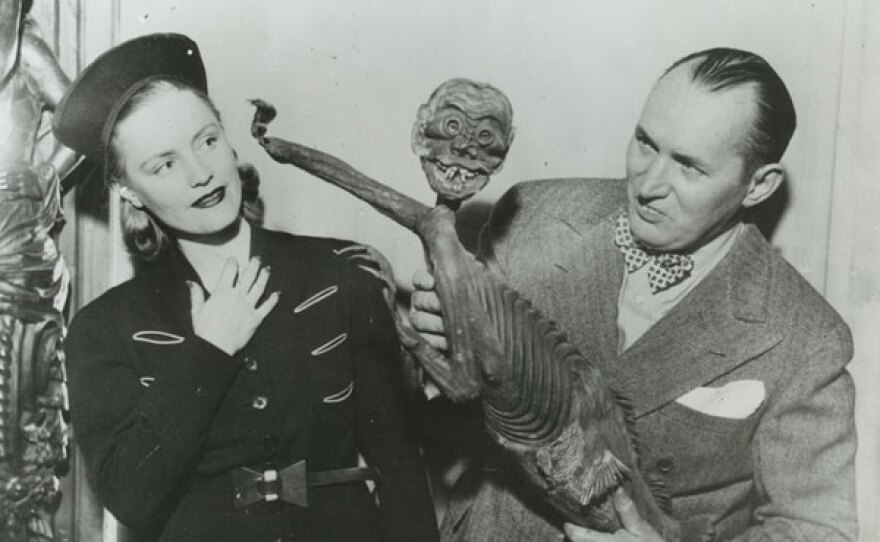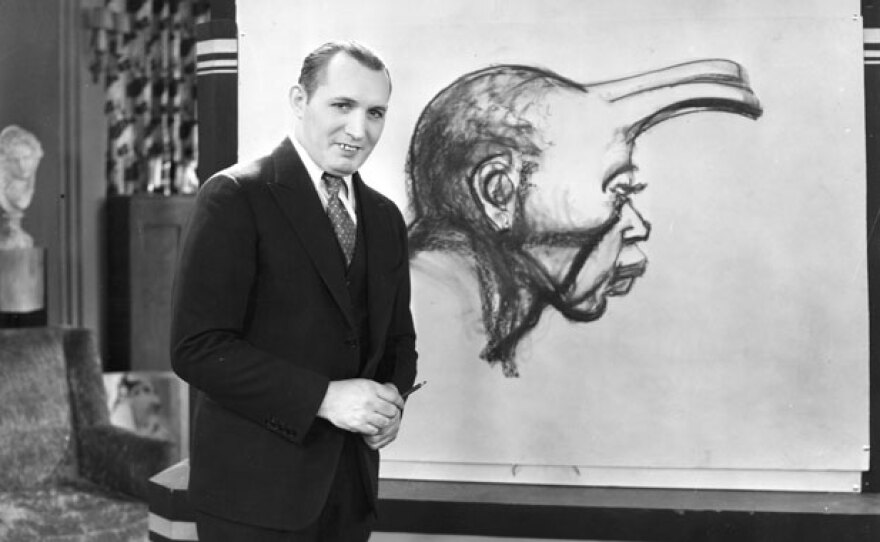Discover the incredible characters and epic stories that have shaped America’s past and present. Television’s most-watched history series, acclaimed by viewers and critics alike, has been honored with every major broadcast award.






Top 20 of 2014
Visit the official Ripley's Believe It or Not! website for the top 20 blogs of 2014.
Film Quote
“Ripley was the first true multimedia mogul of the twentieth century,” says AMERICAN EXPERIENCE Executive Producer Mark Samels. “His genius was recognizing that we are all fascinated with the exotic and the weird. The world is a strange and wonderful place, and no one understood that as well as Ripley.”
LeRoy Robert Ripley rose to fame during the Great Depression, transforming himself from a skinny, buck-toothed boy into an entertainer who mesmerized the nation with his razzle-dazzle blend of homespun Americana, colorful exotica, and freakish oddities. Over three decades, his “Believe It or Not!” franchise grew into an entertainment empire, expanding from newspapers to every form of “new media” in the twentieth century: radio, film, and ultimately, television. At the center of it all was Ripley, whose obsession with the odd and keen eye for the curious made him one of the richest men in the country.
Americans not only loved his bizarre fare, but were fascinated by the man himself, and the eccentric, globetrotting playboy became an unlikely national celebrity. This is the story of the man who popularized the iconic phrase and proof of why we still can’t resist his challenge to “Believe it—or not!” Produced and directed by Cathleen O’Connell, "Ripley: Believe It Or Not" premieres on AMERICAN EXPERIENCE on Tuesday, January 6, 2015 on PBS.
Born in Santa Rosa, California in 1890, Ripley was a loner as a child. He began drawing at an early age and had a cartoon published in Life magazine when he was still a teenager. With the help of a family friend, he soon became a sports cartoonist in San Francisco and quickly parlayed his artistic knack and wide-eyed enthusiasm for adventure into a job as a sports cartoonist with New York’s Globe and Commercial Advertiser. It was at the Globe that he created his first sports-themed “Believe It or Not!” and the popular feature took off.
The opportunity of a lifetime soon came when the Globe’s editors sent him on a four-month around-the- world cruise, and Ripley’s daily dispatches, chronicling the most bizarre forms of human behavior and the man-made oddities he witnessed, captivated readers. His columns caught the attention of Simon & Schuster, who published a "Believe It or Not" book—an instant best-seller that led to a syndicated column in Hearst newspapers. Now earning one hundred thousand dollars a year, “Believe It or Not!” quickly entered the national vocabulary as Americans embraced a steady diet of the weird and wondrous. From a man who could blow up a balloon with his eye, to an Indian holy man who walked on hot coals, to another who shaved with a blowtorch, Ripley fed the country’s natural fascination with the odd, the unusual, and the grotesque.
Ripley treated the people featured in his columns with respect, reportedly prohibiting anyone on staff from calling them freaks, but “oddities” instead. “Ripley was never cynical or sarcastic,” says Neal Thompson, author of "A Curious Man: The Strange & Brilliant Life of Robert Believe It or Not Ripley." “When he presented people doing odd things, it wasn’t in a mocking tone; it was in an appreciative tone. I feel like Ripley’s life work was ultimately a celebration of the underdog. And I think he viewed himself as an underdog.”
Outfitted in his trademark pith helmet, Ripley embarked on fact-finding expeditions from Afghanistan to Zanzibar, Fiji to Finland, Mombasa to Marrakesh, earning him the nickname “the modern day Marco Polo.” An adventurous traveler, he once tried to drive up and over the Caucasus Mountains after a four-foot snowfall and had to be pulled out by a pair of oxen. He appeared in a series of shorts produced by Warner Bros. and hosted a popular radio show. At the 1933 Chicago World’s Fair, he opened the first of his “Odditoriums,” a museum filled with “curioddities” found on his exotic travels, along with live performances by some of the people featured in his cartoons.
But Ripley’s exotic adventures were secretly fueled by Norbert Pearlroth, a bank teller who became his chief researcher and spent every day at the New York Public Library digging into volumes of books to find the colorful and strange tidbits that might make for future columns. With his empire raking in half-a-million dollars a year at the height of the Depression, Ripley had transformed himself from a homely hayseed to a dashing man-about-town, squiring actresses and models and living in a twenty-seven-room mansion and a luxury apartment overlooking Central Park. Hosting elaborate parties and sailing Long Island Sound with a bevy of beauties in a Chinese junk, Ripley had succeeded in transforming himself into one of the most admired and successful men in America.
The advent of the Second World War grounded Ripley. Unable to travel overseas, he used his many platforms to provide patriotic stories about U.S. soldiers and their battlefield exploits. When the war ended, Ripley travelled to his beloved Far East and was heartbroken by the devastation he witnessed. Returning home from the sobering trip, Ripley threw himself into the latest frontier—television. “Believe It or Not!” premiered on NBC in 1949. However, during its thirteenth episode, he suffered a heart attack and died shortly thereafter.
Past episodes of AMERICAN EXPERIENCE are available for online viewing. AMERICAN EXPERIENCE is on Facebook, and you can follow @AmExperiencePBS on Twitter.
Introducing Robert Ripley
"Robert Ripley built a vast multimedia empire by showcasing the bizarre
Ripley's Big Break
"Cartoonist Robert Ripley gets a contract with Hearst for $100





